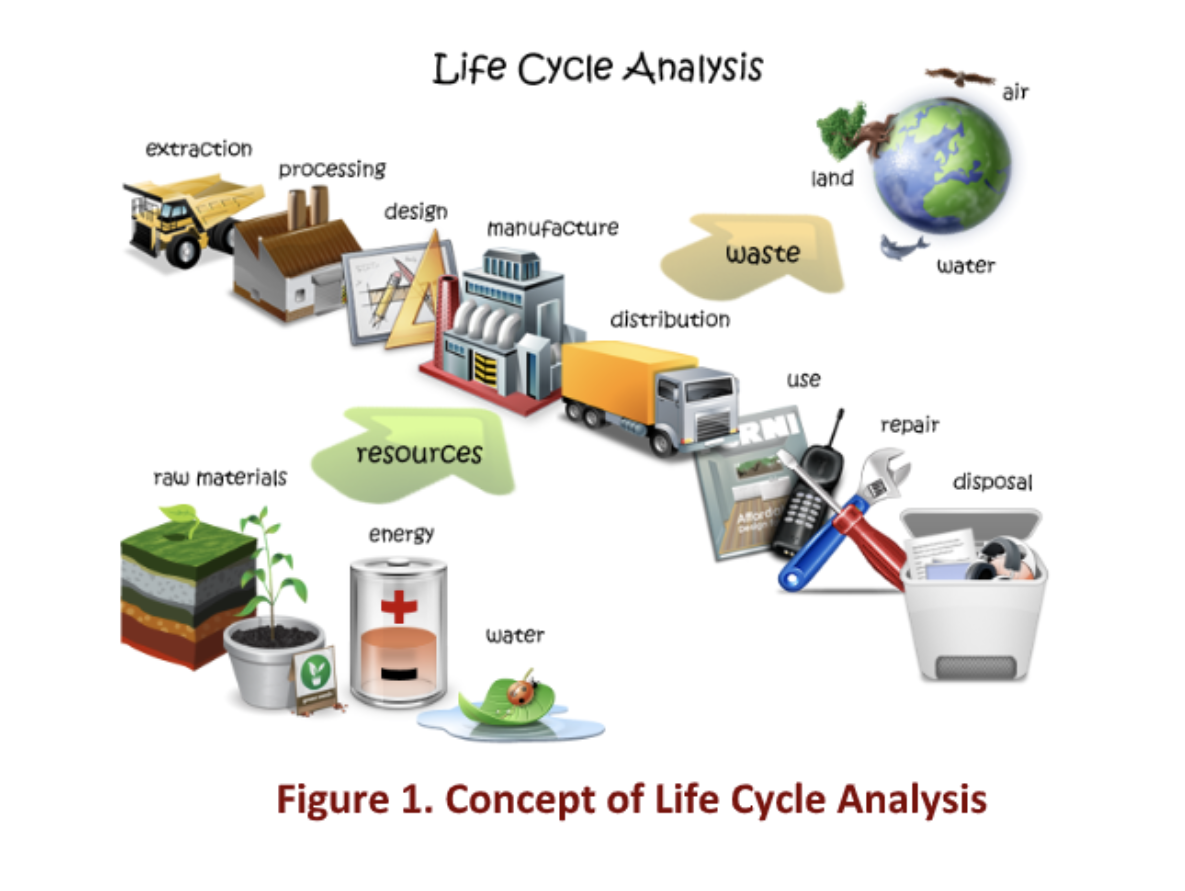Green choices from the lab bench: eco-design and LCA in (polymer) chemistry
Claudia L. Bianchi, Vasilissa Nikonova, Veronica Bortolotto, Serena Biella

Sustainability has emerged as a pivotal concern in materials production, spurred by the significant environmental footprint of traditional manufacturing processes [1]. The methodology of Life Cycle Assessment (LCA) stands as a cornerstone for gauging environmental performance, offering a comprehensive analysis spanning from raw material extraction to end-of-life disposal, including recycling avenues (Figure 1). This methodical approach, underpinned by softwares like SimaPro and robust and updated databases, is guided by the ISO 14040 and ISO 14044 standards, covering the lifecycle model creation, impact assessment, and result interpretation phases [2]. Predominantly applied on an industrial scale, LCA adopts a retrospective, change-oriented stance. Yet, the integration of LCA in laboratory settings—predominantly forward- looking and geared towards future applications—remains underexplored. This gap underscores a missed opportunity for embedding environmental considerations early in the technology development phase, facilitating an informed understanding of design impacts on sustainability [3].
The application of LCA in the development of new technologies, particularly at the laboratory or pilot scale, extends beyond mere environmental impact assessment. It necessitates a vision that projects the scalability of these technologies to industrial levels, preempting costly and time-consuming modifications. Adopting sustainable practices is not only environmentally prudent but also secures economic viability and competitive edge in a sustainability- conscious market landscape. Eco-Design in chemistry, which embodies the fusion of environmental considerations into the design and development phases of chemical products and processes, fundamentally relies on LCA. This reliance is twofold: it aids in identifying and prioritizing environmental improvement areas, and enhances transparency, offering stakeholders a lucid view of the environmental repercussions of various design decisions. The CML-IA method, a prevalent approach in Europe developed by the Center of Environmental Science at Leiden University, exemplifies the LCA application by assessing environmental impacts across 11 categories, each quantified in specific units. By identifying and addressing potential environmental impacts early on, the CML-IA method facilitates informed decision-making, aligning product development with both EU environmental and economic goals, and paving the way for sustainable development [4].

Incorporating assessments of carbon footprint and water footprint into Life Cycle Assessment (LCA) significantly enriches our understanding of environmental impacts. The carbon footprint measures the total greenhouse gas emissions, highlighting areas where carbon efficiency can be enhanced. Similarly, the water footprint evaluates the volume of freshwater utilized, considering both direct and indirect consumption, to identify opportunities for reducing water use and mitigating water scarcity impacts. These metrics provide vital insights into the sustainability profile of materials and technologies, guiding efforts towards minimizing environmental footprints and fostering the development of more sustainable chemical products and processes. Integrating these considerations from the laboratory stage ensures that sustainability is a core aspect of innovation, preparing materials and technologies for a smoother transition to sustainable industrial applications. In sum, the integration of LCA from the experimental phase is crucial, ensuring that materials and technologies are sustainable from the outset. This approach not only mitigates environmental impact but also supports economic sustainability and market competitiveness by delivering transparent and actionable insights.
References
- I. Blanco, C. Ingrao, V. Siracusa Polymers 2020, 12, 1212.
- M. Z. Hauschild, R. K. Rosenbaum, S. I. Olsen Life Cycle Assessment, 2018, 23, Springer.
- M.F. Ordoñez, S. Biella, E. Falletta, C.L. Bianchi Chem. Eng. J. Adv. 2023, 16, 100575.
- A. Navajas, L. Uriarte, L.M. Gandía Sustainability 2017, 9, 17.